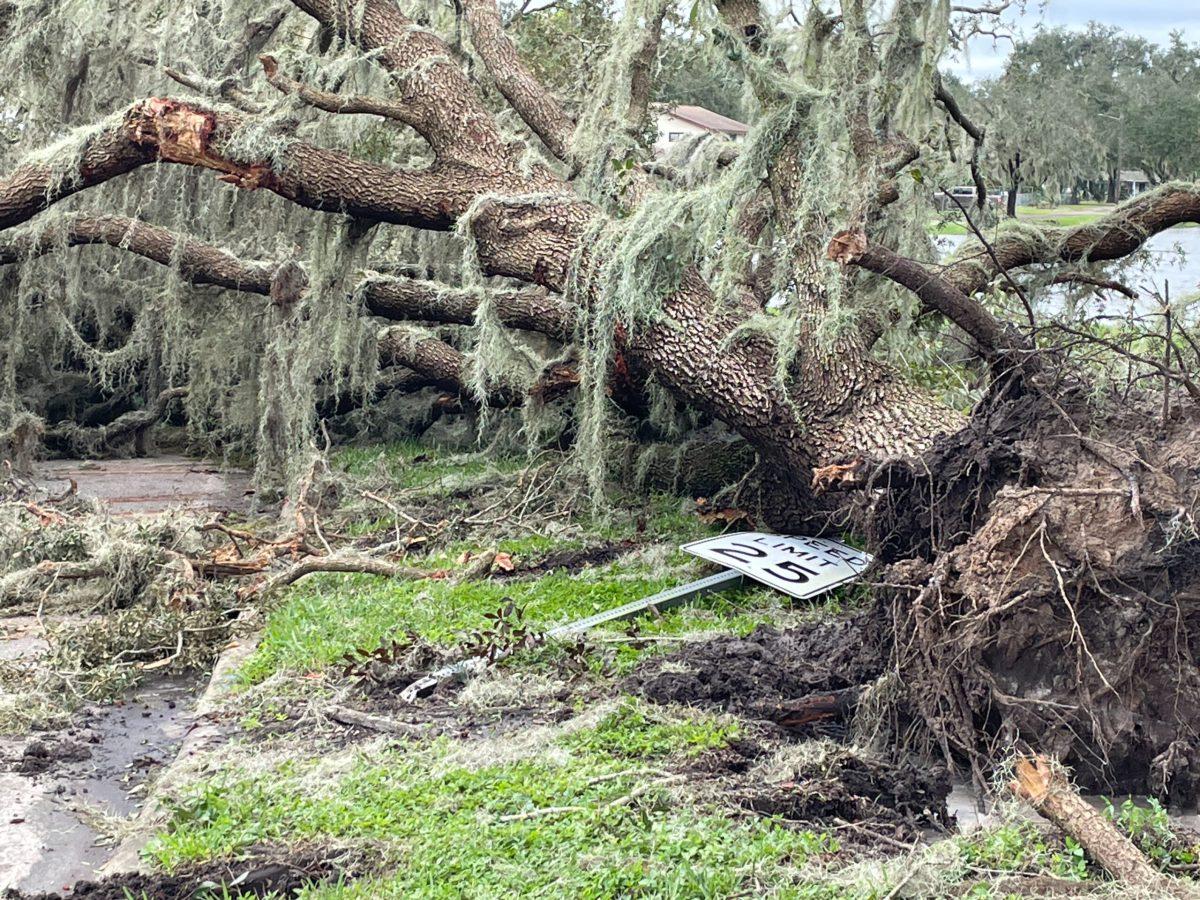From late September to early October, Hurricane Ian wreaked havoc on western Cuba and the southeast region of the United States. It brought rain, flooding, heavy winds and dreary skies until it ceased. However, it left behind severe and dismal lasting effects.
The lasting effects of Hurricane Ian haven’t been fully assessed in regard to Cuba, but the damage has been estimated to surpass $1 billion. Fertile land has been damaged as a result of the flooding, and the banana and tobacco industries will suffer the most because of this. Many Cuban citizens who have been left destitute from the hurricane are struggling to receive aid, and Cuban infrastructure still has not fully recovered because of the costs of repair.
Regarding the southeast United States, Florida was impacted the most. In fact, Hurricane Ian was the deadliest hurricane to hit Florida since the 1935 Labor Day Hurricane. The death toll in Florida is currently sitting at around 127, which is around 92% of the overall estimated death toll resulting from the hurricane. It’s been estimated that over 60% of these deaths were caused by drowning, which primarily resulted from the storm surge. Most of those who passed away were over the age of 65 and unable to evacuate, leaving them vulnerable to the danger brought by the hurricane.
Hurricane Ian heavily impacted agriculture in Florida as well, especially regarding citrus groves. The citrus industry is very important in Florida, with it being valued at over $6 billion yearly. The damage that’s been done to the citrus groves will cause a decrease in revenue and negatively impact Florida’s economy. According to the Department of Agriculture, the orange fruit forecast for 2022-23 puts production at around 1.26 million tons which is a 32% decrease from the previous year. Not only that, but damage dealt by the hurricane wasn’t accounted for when calculations were made, meaning the percentage decrease is likely much higher.
Florida’s ongoing housing crisis has been strained by Hurricane Ian, many people’s homes were severely damaged or completely destroyed by the hurricane This especially impacted those who reside in mobile homes, many of these communities were completely wiped out in some parts of Florida. Newly homeless families have been forced to compete for the low amount of affordable housing available.
However, according to Anne Ray, a researcher at the University of Florida’s Shimberg Center for Housing Studies, Florida has a strong affordable housing trust fund that can be used to rebuild communities,provide affordable homes and rental units in communities that have been heavily affected by natural disasters. Ray also argues that Florida needs to make efforts in building housing that is more durable in the face of storm risks.
A heavy emotional toll has been brought onto Florida’s residents as a result of all of these occurrences. Many of them are struggling to recover from the damage caused by the hurricane. Those who have lost their loved ones are still reeling from their grief. Those who have lost their homes are still picking up the pieces.
Alice Pujols, a Floridian resident whose home was destroyed by the storm, said, “I’m trying to make it to the next day. That’s all I can do.” She and her four children were left without a home and many of their belongings. The hurricane forced them to scour through discarded clothing, toys and other items to try to replace what they lost.
The grief from losing one’s home is very real, especially for those with low income. Two men in their 70s even committed suicide after seeing what Hurricane Ian had done to their homes. Florida has been setting up crisis centers and mental health service facilities to assist those who have been suffering from mental health issues due to the trauma of the storm.
Other states like North Carolina and South Carolina were impacted as well. In North Carolina, the storm claimed an estimated 5 lives and left over 76,000 people without power, with over 65,000 of those being in Wake County. Many students were told to stay home from classes to avoid the adverse effects of the storm. In South Carolina, there have been no confirmed deaths, but over 210,000 people lost power and winds reached speeds around 85 mph.
Because the hurricane had been downgraded to a tropical storm, it wasn’t nearly as detrimental to North and South Carolina as it was to Cuba and Florida. However, there has still been some relief provided for the victims in these states. The IRS has extended tax deadlines for the victims until February 15, 2023, and direct federal assistance has been provided under FEMA.
Estimates for the total cost of damage repair from the storm vary across different sources. CoreLogic, an Irvine CA-based corporation specializing in financial and property analytics, estimates that potential insured losses could range between $28-47 billion. A data firm called Enki Research has placed the cost at approximately $87 billion. Another firm specializing in risk modeling, Verisk, estimated that the cost of the damage would be around $42-57 billion.
These cost estimates only include damage done by flooding and winds, and would likely increase based on the economic impact that the storm has had on businesses. Big sources of tourism revenue for Florida, such as Disneyland, were closed for days because of Hurricane Ian, and likely lost thousands of dollars during this time.
Hurricane Ian’s ferocity and strength has shed light on the social issue of climate change. Many have been using Hurricane Ian as evidence of how climate change is impacting the intensity of natural disasters. Biden even claims that Hurricane Ian , “ends the climate change discussion.” Those who believe this are also using this as justification for why infrastructure needs to be built with natural disasters in mind. A lot of infrastructures have proved to be weak in the face of strong storms like Ian, which is why it often costs millions or even billions of dollars to deal with the damages.
Climate activists also believe that strong storms like this are more than enough reason to crack down on the usage of fossil fuels and decrease carbon emissions. For years climate scientists have explained that global warming will likely increase the intensity of storms. Government officials of various countries are moving more funding towards slowing down climate change in an attempt to avoid more severe natural disasters in the future.






